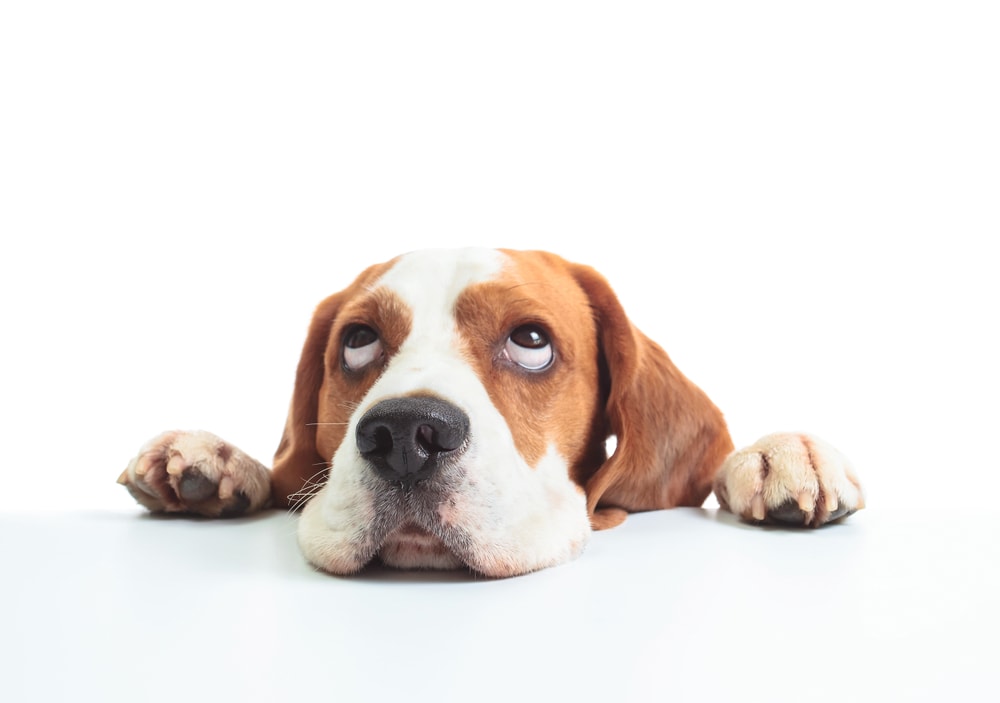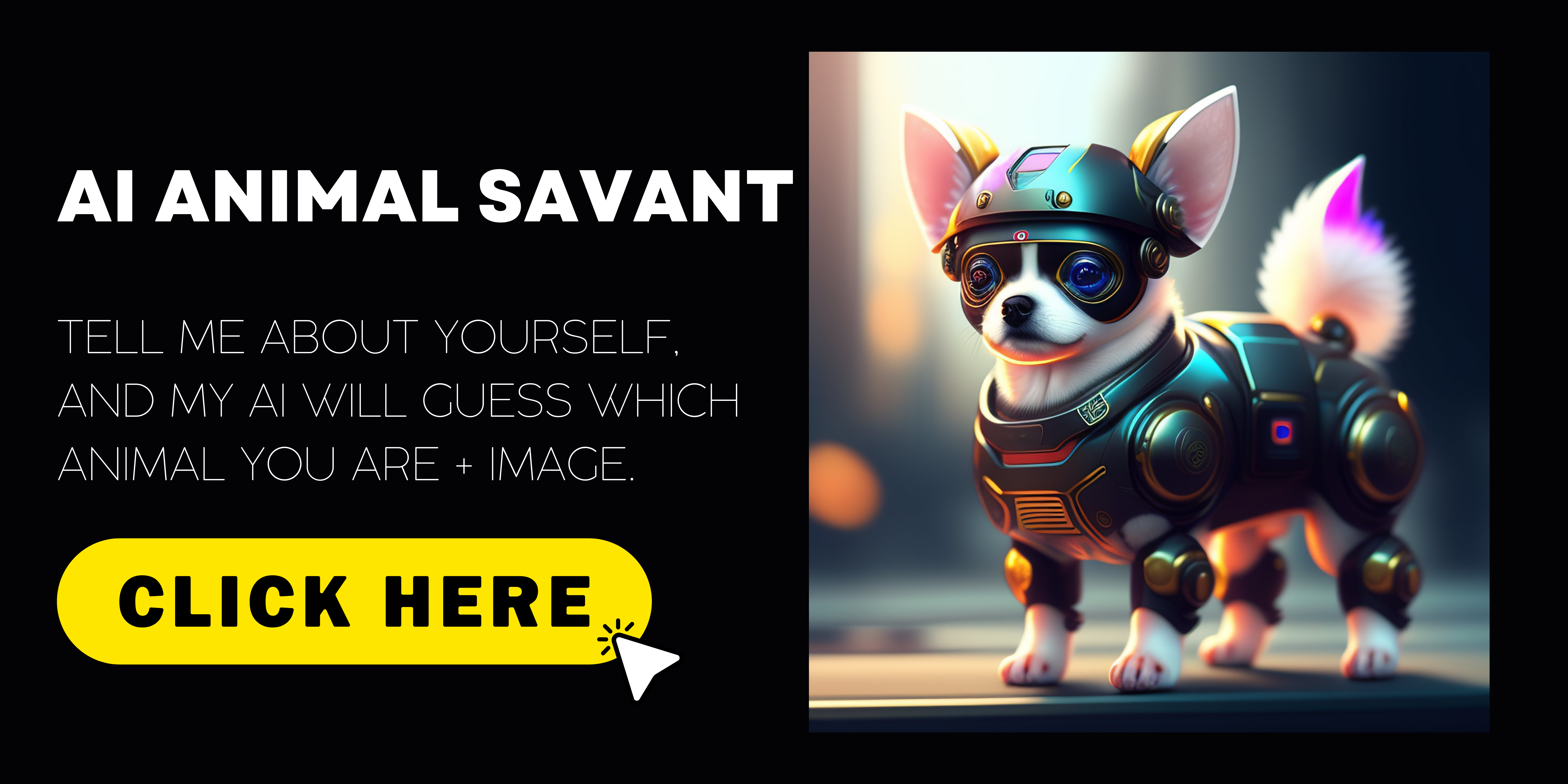It’s a disturbing moment, as your pet is lying on the sofa, and you realize that you only see the whites of their eyes like they’re in a state of possession (eyes rolling back). Maybe they’re in the yard calmly; however, you notice that one of their eyes starts to swivel. There are numerous reasons the eyes of dogs start to roll back into their heads, and this doesn’t necessarily mean they’re at risk; however, it’s an alarming sign and one which your vet should investigate to get a correct diagnosis.
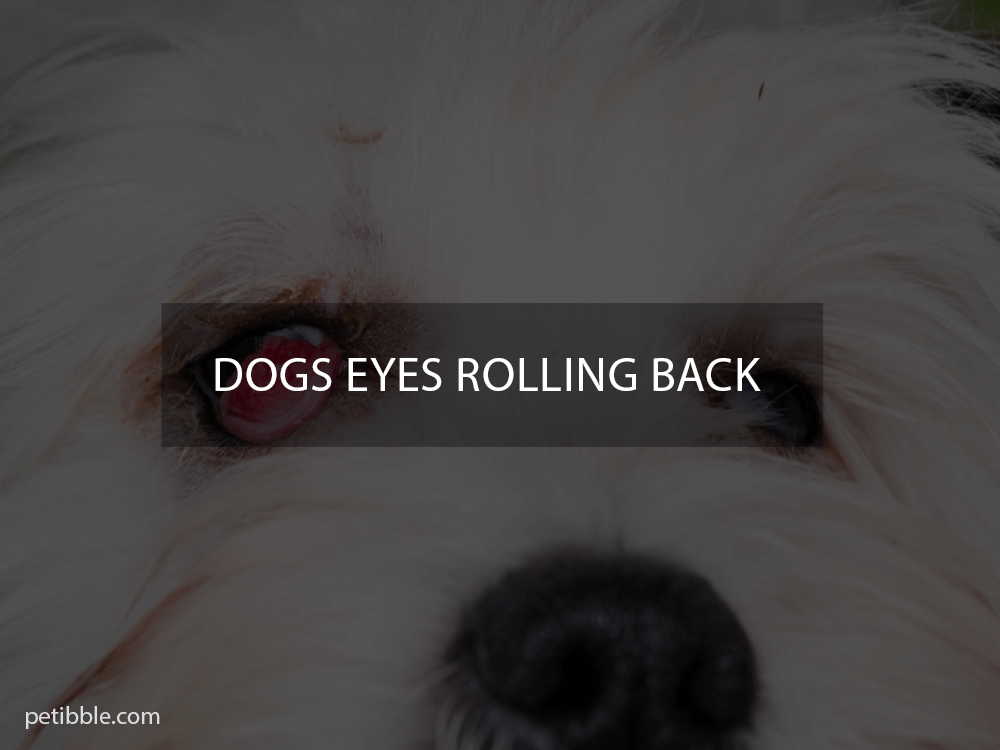
Why Did My Dog’s Eyes Roll Back? (Understanding the Nictating Membrane)
In the beginning, it may come as an oddity to discover that the image you’re looking at isn’t the actual globe of your dog’s moving back. It’s usually simply your dog’s nictating membrane that is also known as ‘ haw ‘ or the ‘ third eyelid .’ The third eyelid is typically not visible because it’s hidden at the corner of the dog’s eye.
Although it’s supposed to remain this way, it may protrude and extend beyond its normal position and completely cover up the cornea. This is the reason when you’re a dog owner experiencing this for the first time, you might think that your dog’s eyes have rolled back into the head, but that’s not always the case. It’s typically simply the nictating membrane that covers the cornea.
The third eyelids typically have various colors, some of which are clear and some cloudy. The shade depends on the breed.
Nystagmus.
One of these defects is nystagmus. The involuntary movements of the eyes characterize this.
There are two kinds of this illness.
- Jerk Nystagmus’seyes move slowly in one direction before suddenly jerking the opposite way. Out of the two, this is the more common type.
- Pendular Nystagmus, the eyes oscillate back and forth in small movements and at the same speed.
In addition to eye movement, the most common symptoms of nystagmus can be seen in head tilting and circles. This happens because the dog’s head tilts to match what its eyes are experiencing.
Since nystagmus may appear suddenly (although it usually appears since birth), it can be a source of stress for the dog’s owner.
Nystagmus could be genetic. It could result from a defect with the dog’s nervous system, and the cause could be an injury to the body, hypothyroidism, tumors, or exposure to certain chemicals, including lead.
you may like : can dogs eat nutella?
Cherry eye.
The prolapse of the dogs third eyelid gland turns the membrane into a fleshy red mass well-visible on one or both sides of the eye, which gives this condition the name of Cherry Eye. This is why it’s called. This condition is prevalent among puppies and cats less than two years old.
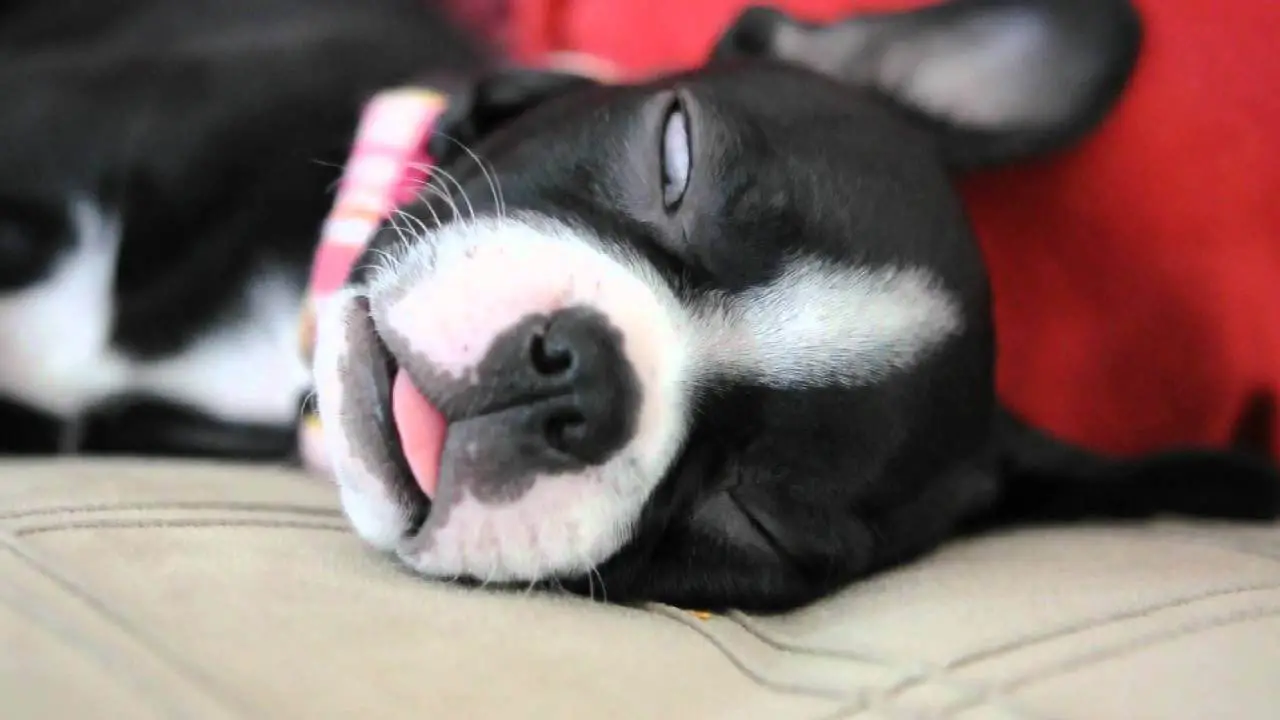
Vestibular Disease.
Another problem can be vestibular illness typically caused by an infection in the middle or inner canal of the ear. It can cause your pet to appear unbalanced in its walking and for his globes to shift involuntarily up or down. He may look drunk. This isn’t all that unusual in older puppies.
Canine idiopathic vestibular disease, also known as old dog vestibular disease. It is caused by several factors other than the dog eye infection. A previous injury or possibly metabolic issue may be the cause of your pet’s. It could also be due to old age. Old dog vestibular disease is a common dog eye problem in aged dogs.
What is the reason my dog rolls his eyes when he sleeps?
What is the reason my dog rolls his eyes when he sleeps?
To comprehend a dog’s eye movements, we must first study their sleeping patterns like that of humans. The two main types of sleeping stages:
- Rapid Eye Movement is the stage where the dog is dreaming. It is possible to observe this motion regardless of whether your dog’s eyes shut completely or not.
- Short Wave sleep or the non-REM stage is when the mind is calm. However, the body isn’t completely at peace, and dogs can awake at the slightest sound.
In many instances, the pet owner is worried about their dog’s eyes rolling to sleep; what they’re watching is the eyelids of their third which is also known as the nictitating skin, that is found in a variety of species of animals like reptiles, birds, cats or dogs.
The third eyelid is translucent and often referred to as the haw. It is concealed beneath the lower eyelid. Its primary function is to protect the eyes by taking away dust and other particles.
Reptiles and birds have a complete membrane, which can be controlled independently of the normal eyelids. Dogs are the only animals with a membrane that nictitates but cannot control independently. It can move in tandem with the normal eyelids; however, when they’re asleep, it’s common for it to occur when the eyelid of their 3rd eye becomes visible. It’s still performing its essential task of protecting the eye, but it also has the potential to cause a pet owner to be frightened.
you may like : can dogs eat beef?
Eye Injury.
You may notice the eyes of your dog squirming due to intense discomfort. The eyes of your dog may get small cuts or scratches. These can cause extreme discomfort, and eye problem’s in your dog. Eye injury may lead your dogs eye to eye infection, If you notice eyes rolling back in your dog more than normal, look for these indications:
- Barking and whining for a long period of time
- Feeling tired and sluggish
- Food is losing interest
- Involvement in activities is declining
- Doing a frantic dance
- Not sleeping well, even during the evening
- Posing as if lying in odd positions
- Inability to lay down
As dogs respond to pain in different ways, a few of the most commonly observed indications that your dog is suffering. The best way to determine if your dog is hurt is to look out for unusual behavior in dogs. Dogs suffering from pain may exhibit behaviors that are not typical for them. This could be something that you observe. It is imperative to get your pet to the veterinarian promptly. There are a variety of eye condition’s which cause pain, from conjunctivitis to cancer which might not be diagnosed without an extensive analysis
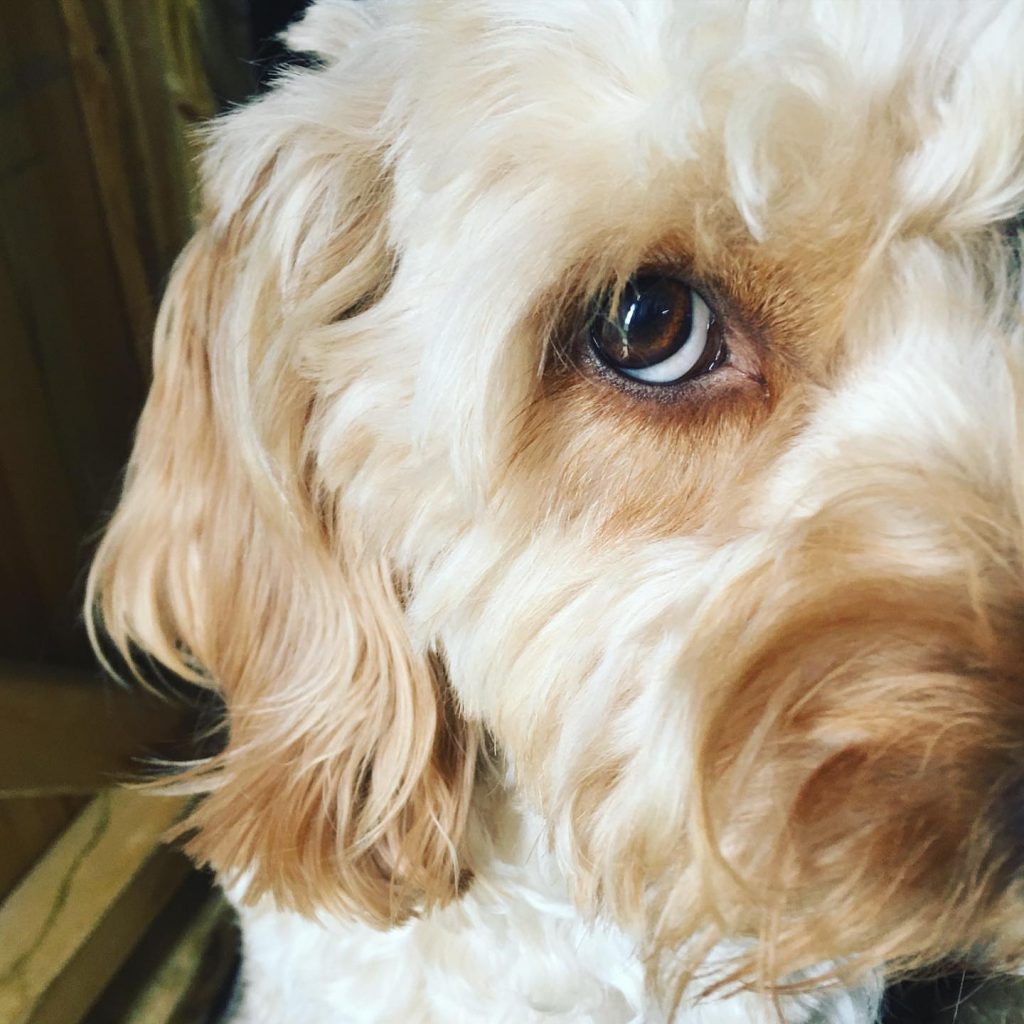
Strabismus.
It is a condition that occurs when the dog’s brain can’t control the eye muscles to cooperate. The result is eye muscles moving at different speeds. The condition is usually due to aging; however, it could be caused by vestibular disorders or tumors.
Seizures.
Seizures occur due to the brain’s activity being abnormal. It is possible to recognize a seizure when a dog becomes unusually stiff, loses consciousness, begins shaking inexplicably, or collapses suddenly.
However, certain seizures – also known as silent seizures’ – may be limited to a specific body part, like the eyes. This is why they’re generally not noticed. Although they aren’t painful, they could make your dog confused and put the dog in a panic.
Also, some dogs may anticipate the possibility of a seizure. They might begin acting anxiously or even wretch for as long as 24 hours before the time seizures occur.
Pre-existing medical conditions cause the majority of seizures. They include:
- Epilepsy
- Infections
- Traumas
- Ingestion of animals infected or toxic substances
If your pet has never experienced seizures before this, ensure that the seizure stops before taking him to the veterinarian. Although you may give your dog medicines that assist in reducing the seizures, the only way to remove seizures is to pinpoint the root cause and address the issue accordingly.
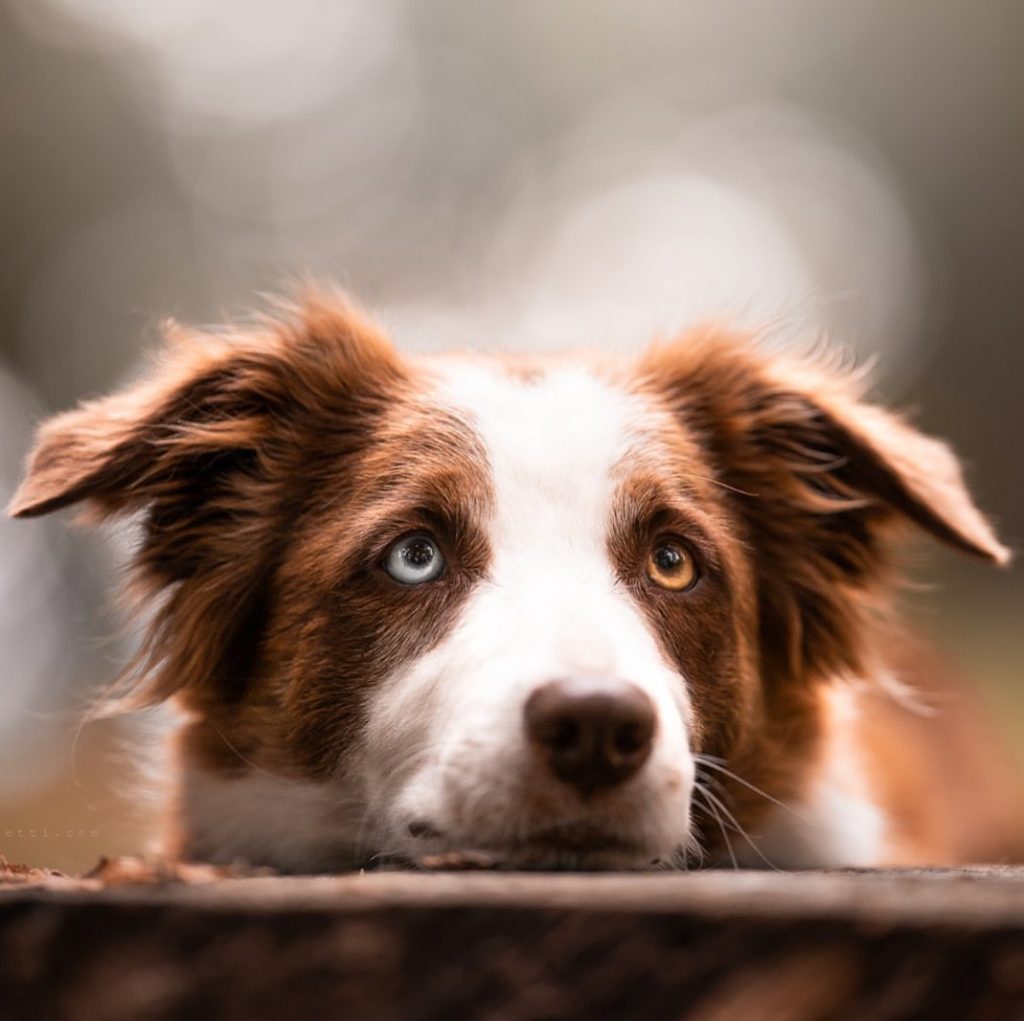
Conclusion
The next time you see your dogs eyes rolling back, consider his hysterical grin. Naturally, that tiny bit of tissue could be a sign of something minor or far more important. Your dog’s health is dependent on your judgment not to ignore the warnings. Your peace of heart, and your pet’s health, depends on it. Be sure to follow the expert advice of medical professionals and always prepare a plan should an accident or health issue arise.

